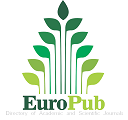Productivity of Earthworms (Pheretima sp.) with the Combination of Cow Dung and Flour of Green Mussel Shell Flour as Cultivation Media
Abstract
Composting and mixing organic and inorganic materials are among the abilities of earthworms. The survival of earthworms is influenced by several environmental factors, including media temperature, media pH, media moisture, media texture, and media nutrient content. Shellfish shells are underutilized waste that is increasing in quantity as more people consume food from the sea. This study aims to analyze the productivity of earthworms (Pheretima sp.) using a combination of cow dung and green shellfish shells as a cultivation media. The study uses a Completely Randomized Design (CRD) method with four treatments and three replications, and the obtained results are analyzed using the Tukey test. The observed parameters are temperature, moisture, pH, total body weight, population, cocoon count, and media depletion. The results of the study show a significant (P<0.05) on the use of green shellfish shells in all measured parameters. The treatment P1 increase the body weight of earthworms (Pheretima sp.) by 33.3 grams and resulted in a media loss 262.67 grams. The use of green mussel shell flour at a concentration of ≥ 10% can increase the productivity of soil worms.















